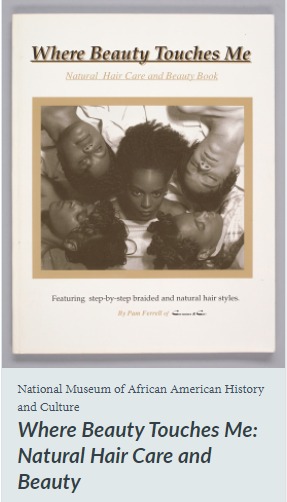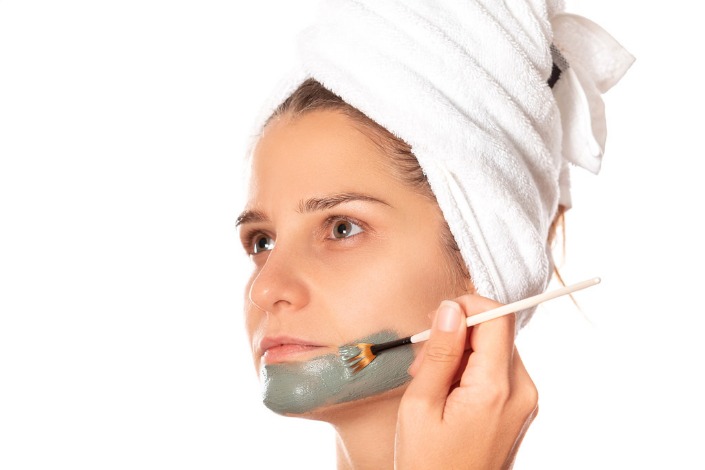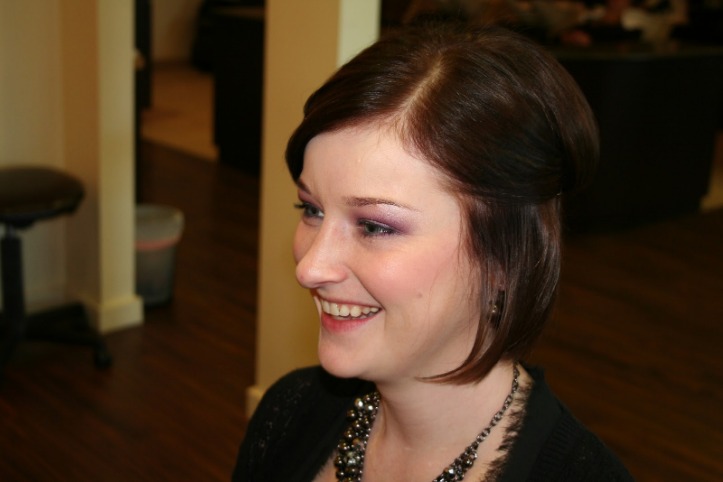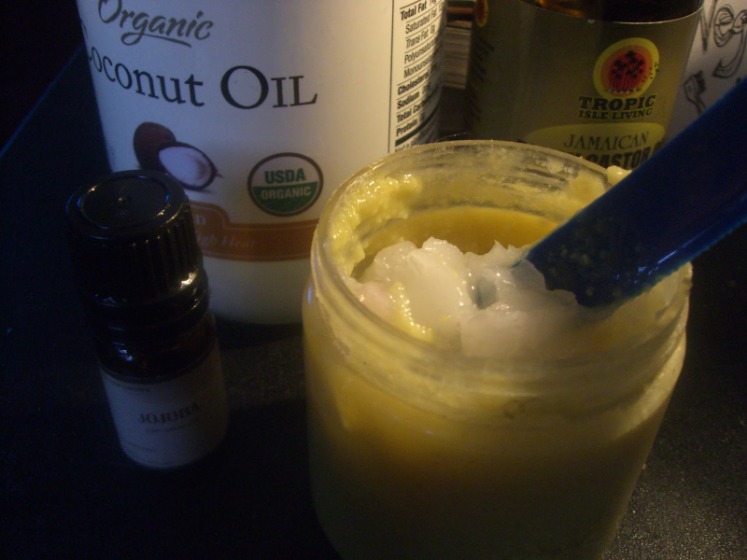Understanding Hair Types and Scalp Conditions
Understanding your hair type and scalp condition is essential for achieving healthy, beautiful hair. By recognizing the unique characteristics of your hair and scalp, you can select the right products and routines tailored to your needs. This knowledge empowers you to maintain optimal hair health and enhance your overall beauty routine.
Identifying Different Hair Types (Straight, Wavy, Curly, Kinky)
Understanding hair types and scalp conditions is essential for choosing the right hair care products and routines. Proper identification of your hair type helps to maintain healthy, beautiful hair and address specific scalp concerns effectively.
- Straight Hair: Smooth, shiny, and typically easy to manage, straight hair tends to reflect light well and shows fewer signs of frizz. It is usually oilier at the roots due to natural sebum spreading easily.
- Wavy Hair: Characterized by loose, S-shaped waves, wavy hair has a balanced shine and body. It may be prone to frizz and requires hydrating products to enhance its natural texture.
- Curly Hair: Featuring defined, spiral-shaped curls, curly hair tends to be dry and delicate. It needs moisture-retaining products and gentle handling to maintain curl definition and prevent breakage.
- Kinky Hair: Also known as tightly coiled or Afro-textured hair, kinky hair has a very tight curl pattern. It is often dry and fragile, requiring rich moisturizing and protective styles to promote health and strength.
Common Scalp Conditions (Oily, Dry, Sensitive, Dandruff)
Understanding your hair type and scalp condition is essential for achieving healthy, beautiful hair. Different scalp conditions require specific care to maintain balance and prevent issues such as dryness, oiliness, or irritation. Recognizing common scalp conditions can help you select the right products and routines for your hair care needs.
Oily scalp is characterized by excess sebum production, leading to greasy hair and dandruff. Regular cleansing with a balancing shampoo can help control oil without over-drying the scalp. Dry scalp, on the other hand, may feel tight, flaky, and itchy, often caused by harsh shampoos or environmental factors. Using moisturizing products and gentle cleansers can alleviate dryness.
Sensitive scalp is prone to irritation, redness, and itching, often triggered by certain hair products or environmental stimuli. It’s important to choose hypoallergenic and soothing hair care products to minimize discomfort. Dandruff involves flaky scalp skin and can be caused by fungal overgrowth, dryness, or sensitivity. Medicated shampoos containing ingredients like zinc pyrithione or ketoconazole can help manage dandruff effectively.
Essential Hair Care Practices
Healthy hair begins with proper care and attention. Essential hair care practices help maintain the natural shine, strength, and overall health of your hair. By following a few simple routines, you can enhance your hair’s appearance and prevent common issues such as dryness, breakage, and dandruff. Investing in regular care ensures your hair remains beautiful and vibrant every day.
Proper Washing Techniques
Proper washing techniques are fundamental to maintaining healthy hair and promoting overall hair beauty. To ensure your hair remains clean without causing damage, start by thoroughly wetting your hair with lukewarm water. Apply a generous amount of shampoo, focusing on the scalp rather than the hair ends, and gently massage it in using fingertips to stimulate the scalp and remove buildup. Rinse thoroughly to remove all traces of shampoo. Follow with a conditioner suited to your hair type, applying mainly to the lengths and ends, then leave it on for a few minutes before rinsing with cool water to seal the cuticles. Avoid excessive washing, which can strip natural oils and lead to dryness, and always handle wet hair gently to prevent breakage. Regularly using these proper washing techniques helps maintain healthy, shiny, and beautiful hair.
Frequency of Hair Washing
Maintaining healthy hair requires consistent and proper hair care practices. Regularly washing your hair helps to remove dirt, excess oil, and product buildup, promoting a clean scalp and healthier hair growth. The frequency of washing depends on individual hair type and lifestyle; for example, those with oily hair may need to wash daily, while those with dry or curly hair might benefit from washing less frequently, such as once or twice a week. Using a gentle shampoo suited to your hair type and following up with conditioner can enhance hair health. Additionally, avoiding excessive heat styling and harsh chemical treatments can prevent damage. Incorporating regular scalp massages and using nourishing hair masks can also improve scalp circulation and strengthen hair strands. Overall, understanding your hair’s needs and establishing a consistent washing routine are essential for maintaining optimal hair health and beauty.
Choosing the Right Shampoo and Conditioner
Choosing the right shampoo and conditioner is essential for maintaining healthy, beautiful hair. These products should be selected based on your hair type and specific needs to ensure optimal care and nourishment.
- Identify your hair type: Whether it is oily, dry, curly, straight, or color-treated, understanding your hair type helps in choosing the appropriate products.
- Read ingredient labels: Look for gentle, sulfate-free formulas that prioritize nourishing ingredients like natural oils, proteins, and vitamins.
- Match products to your scalp condition: Use invigorating shampoos for oily scalps and moisturizing conditioners for dry or damaged hair.
- Avoid harsh chemicals: Steer clear of products containing parabens, sulfates, and alcohols that can strip moisture and cause damage.
- Test new products: Conduct a patch test before fully switching to new shampoo or conditioner to prevent reactions or allergies.
- Follow proper usage: Apply shampoo mainly to the scalp and roots, and conditioner to the lengths and ends for balanced cleansing and hydration.
Deep Conditioning and Hair Masks
Essential hair care practices are vital for maintaining healthy, shiny, and strong hair. Regular washing with suitable shampoos helps keep the scalp clean, while conditioning ensures hair remains moisturized and manageable. It’s important to avoid excessive heat styling and harsh chemical treatments to prevent damage. Proper trimming every few months also promotes healthy growth and prevents split ends.
Deep conditioning treatments and hair masks are excellent methods to nourish and rejuvenate hair. These intensive treatments penetrate the hair shaft to restore moisture, repair damage, and improve elasticity. Using a hair mask once a week can dramatically enhance hair texture, making it softer and shinier. Choose masks with natural oils, proteins, and vitamins to address specific hair concerns such as dryness, frizz, or damage from chemical treatments.
Hair Styling Tips and Techniques
Discover essential hair styling tips and techniques to enhance your hair’s natural beauty and achieve a polished look. Whether you’re aiming for everyday elegance or a special occasion style, mastering the right methods can make all the difference. Explore simple yet effective ways to care for your hair while creating stunning hairstyles that reflect your personal style.
Heat Styling Safety
Maintaining healthy and stylish hair requires understanding effective hair styling tips and prioritizing safety when using heat tools. Proper techniques can enhance your look while minimizing damage and ensuring your scalp remains healthy.
- Always prepare your hair with a heat protectant spray before using heat styling tools to prevent damage.
- Avoid high-temperature settings; use the lowest effective heat to style your hair safely.
- Limit the frequency of heat styling to reduce cumulative damage and maintain hair health.
- Keep your tools clean and in good condition to ensure even heat distribution and prevent hair breakage.
- Use the correct tools for different styles, such as a round brush for volume or a flat iron for sleek straight looks.
- Allow your hair to cool down after styling to set the style and reduce the risk of heat-induced damage.
- Incorporate regular deep conditioning treatments to restore moisture and strengthen your hair.
- Always start with clean, dry hair to achieve the best style and reduce heat damage.
- Divide hair into sections for more precise and uniform styling.
- Use a heat setting appropriate for your hair type—lower for fine or damaged hair, higher for thick or curly hair.
- Avoid using heat on wet hair to prevent extreme damage and breakage.
- Limit the duration of heat exposure to each section to protect your hair from burning or overheating.
Protective Hairstyles
Hair styling tips and techniques are essential for maintaining healthy and beautiful hair. Using the right tools, products, and methods can transform your look while protecting your hair from damage. Incorporate heat protectants before using styling tools and avoid excessive heat to prevent breakage. Regularly trimming split ends helps to keep hair looking fresh and healthy. Techniques like smoothing, curling, or braiding can add variety to your style while preserving hair integrity.
Protective hairstyles are great for minimizing damage and promoting hair growth, especially for those with curly or textured hair. Styles such as braids, buns, twists, and boxes can shield hair from environmental stressors and reduce manipulation. These styles help retain moisture and prevent breakage, making them ideal for transitioning hair or giving your hair a break from daily styling. To maintain the health of protective styles, keep your scalp clean and moisturized, and avoid keeping styles in for extended periods to prevent buildup or tension.
Using Hair Tools Correctly
Using hair tools correctly is essential for achieving beautiful, healthy hairstyles while minimizing damage. Always start with clean, dry hair to prevent unnecessary breakage and ensure tools work effectively. Before using heat styling tools like flat irons or curling wands, apply a heat protectant spray to shield your hair from high temperatures. Adjust the temperature settings suitable for your hair type; lower heat for fine or damaged hair, and higher heat for thicker hair. When styling, work in small sections to ensure even heat distribution and better results. Avoid holding hot tools in one spot for too long to prevent heat burns and breakage. After styling, use a nourishing serum or hair oil to add shine and lock in moisture. Regularly clean your tools to remove product buildup that can transfer onto your hair and cause damage. Proper use of hair tools, along with good hair care practices, can help you achieve stunning styles while maintaining healthy hair.”
DIY Hairstyles for Different Occasions
Achieving the perfect hairstyle can boost confidence and complement any look. Implementing effective hair styling tips and techniques is essential for maintaining healthy, beautiful hair and creating stunning DIY hairstyles suitable for various occasions.
Hair Styling Tips and Techniques
- Always start with clean, towel-dried hair to ensure easier styling and better hold.
- Use heat protectant sprays before applying heat tools to prevent damage.
- Trim split ends regularly to maintain hair health and prevent breakage.
- Choose appropriate styling products based on your hair type, such as mousse for volume or serum for shine.
- Detach accessories easily to avoid pulling or breaking hair strands.
- Practice patience and avoid rushing to achieve polished styles and reduce hair stress.
- Invest in good quality tools like round brushes, straighteners, and curling irons for professional results.
DIY Hairstyles for Different Occasions
- Casual Day Out: A messy bun or loose braid creates a relaxed, stylish look with minimal effort.
- Work or Formal Events: A sleek ponytail or elegant chignon can give a polished and professional appearance.
- Parties or Night Outs: Try glamorous curls or a side-swept updo to add volume and sophistication.
- Weddings or Special Celebrations: Romantic braided crowns or intricate braid combinations elevate your style for special occasions.
- Sporting Activities: A tight braid or ponytail keeps hair secure and out of the face during physical activities.
By mastering these hairstyling techniques and exploring diverse DIY hairstyles, you can ensure your hair looks fabulous for any occasion while maintaining its health and vitality.
Natural and Organic Hair Care
Natural and organic hair care products have gained popularity for their gentle and environmentally friendly approach to maintaining healthy hair. Emphasizing the use of plant-based ingredients and free from harmful chemicals, these products offer a safer and more sustainable alternative to conventional hair treatments. Incorporating natural and organic solutions into your hair care routine can promote stronger, shinier, and healthier hair while supporting eco-conscious choices.
Benefits of Natural Hair Products
Natural and organic hair care products have gained popularity for their gentle, environmentally friendly, and health-conscious approach to maintaining beautiful hair. These products are formulated with botanical extracts, essential oils, and plant-based ingredients that nourish the hair without harsh chemicals.
- Reduced chemical exposure: Natural products avoid synthetic chemicals like sulfates, parabens, and artificial fragrances that can cause scalp irritation and long-term health issues.
- Gentle on the scalp and hair: Organic ingredients promote healthier scalp conditions and minimize dryness and breakage.
- Environmentally friendly: These products are often sustainably sourced and biodegradable, reducing their ecological impact.
- Enhanced hair health: Natural ingredients deliver vitamins and nutrients that strengthen hair and promote shine.
- Fewer allergens: Organic formulations tend to be hypoallergenic, making them suitable for sensitive skin and scalp.
DIY Natural Hair Treatments
Natural and organic hair care focuses on using plant-based and chemical-free products to maintain healthy, shiny hair. These methods prioritize ingredients that nourish the scalp and hair strands without harmful additives, making them suitable for all hair types, especially sensitive or damaged hair. Incorporating organic shampoos, conditioners, and treatments can lead to improved hair texture and overall scalp health.
DIY natural hair treatments are a popular way to maintain beautiful hair at home using simple ingredients. For example, a nourishing mask made from honey, coconut oil, and yogurt can deeply hydrate and strengthen hair. Apple cider vinegar rinses help restore pH balance and add shine, while herbal infusions like rosemary or chamomile can enhance hair growth and color. Regular use of these natural treatments promotes healthier hair without the risk of synthetic chemical exposure, making for a safe and cost-effective beauty routine.
Ingredients to Look for in Organic Products
Natural and organic hair care products have gained popularity for their gentle and environmentally friendly ingredients. Choosing the right products can help nourish your hair while avoiding harmful chemicals. Understanding the key ingredients to look for can enhance your hair care routine and promote healthier, shinier hair.
- Argan Oil – Known for its moisturizing and nourishing properties, it helps improve hair elasticity and shine.
- Coconut Oil – Penetrates deeply into hair strands, providing moisture and reducing protein loss.
- Aloe Vera – Soothing and hydrating, it promotes scalp health and reduces dryness.
- Jojoba Oil – Similar to natural scalp oils, it helps balance oil production and strengthen hair.
- Tea Tree Oil – Has antimicrobial properties that help combat dandruff and scalp irritation.
- Shea Butter – Rich in vitamins and fatty acids, it nourishes dry and damaged hair.
- Rosemary Extract – Stimulates scalp circulation and encourages hair growth.
- Lavender Oil – Provides a calming scent and may help improve scalp health.
Addressing Hair Concerns and Problems
Healthy, beautiful hair is an important aspect of overall grooming and confidence. Addressing common hair concerns and problems is essential for maintaining luscious, manageable hair. By understanding the causes and effective solutions, you can improve the health and appearance of your hair, ensuring it remains vibrant and strong.
Dealing with Hair Fall
Addressing hair concerns and problems is essential for maintaining healthy and beautiful hair. Understanding the causes of common issues such as hair fall, dandruff, and dryness can help in choosing effective solutions tailored to your needs.
Dealing with hair fall requires a multifaceted approach. Maintaining a balanced diet rich in vitamins and minerals, such as iron, biotin, and vitamin D, can promote stronger hair growth. Gentle hair care practices, like using mild shampoos, avoiding excessive heat styling, and not over-washing, help reduce stress on hair follicles. Regular scalp massages with nourishing oils, such as coconut or castor oil, can increase circulation and stimulate hair growth.
If hair fall persists, consulting a dermatologist or trichologist is advisable to identify underlying conditions like hormonal imbalances or scalp infections. Alongside medical advice, adopting a healthy lifestyle, managing stress, and ensuring proper hydration are vital steps in tackling hair concerns effectively. By combining consistent hair care routines with a nutritious diet, you can improve the overall health of your hair and enjoy a beautiful, lustrous look.
Managing Frizz
Managing frizz and addressing hair concerns are common challenges in hair care, but with the right strategies, you can achieve smooth, healthy hair. Proper hydration, regular conditioning, and using anti-frizz products help control flyaways and maintain shine. It’s important to choose gentle shampoos that do not strip natural oils and to avoid excessive heat styling, which can damage hair and worsen frizz. Incorporating deep conditioning treatments and serums designed for frizzy hair can also improve texture and manageability. Additionally, adopting a healthy diet rich in vitamins and minerals contributes to overall hair health. With consistent care and the right products, you can effectively tackle hair problems and enhance your hair’s beauty and strength.
Reducing Split Ends
Addressing hair concerns and problems is essential for maintaining healthy, beautiful hair. One common issue is split ends, which can make hair look damaged and frizzy. To reduce split ends, it is important to regularly trim your hair and avoid excessive heat styling. Using nourishing hair masks and conditioners can strengthen strands and prevent breakage. Incorporating a balanced diet rich in vitamins and minerals also supports healthy hair growth. Additionally, limiting chemical treatments and gentle handling of your hair can significantly improve its overall health and appearance.
Treatment for Dandruff and Scalp Sores
Addressing hair concerns and problems is essential for maintaining healthy, beautiful hair. Proper care and targeted treatments can significantly improve issues like dandruff and scalp sores, leaving your scalp refreshed and your hair vibrant.
- Maintain good scalp hygiene by washing regularly with a gentle, anti-dandruff shampoo containing active ingredients like ketoconazole, zinc pyrithione, or selenium sulfide.
- Avoid using harsh hair products that can irritate the scalp or cause dryness and flakiness.
- Apply natural remedies such as tea tree oil or apple cider vinegar rinses to soothe the scalp and reduce dandruff buildup.
- Consult a dermatologist if scalp sores persist or worsen, as they may require medicated treatments or prescription therapies.
- Ensure a balanced diet rich in vitamins and minerals, particularly zinc, biotin, and vitamins A, D, and E, to support scalp health.
Hair Nutrition and Diet
Proper hair nutrition and a balanced diet play a crucial role in maintaining healthy, shiny, and strong hair. The nutrients we consume directly influence hair growth, texture, and overall vitality. Incorporating essential vitamins and minerals into our daily meals can enhance hair health and contribute to a more radiant appearance. Understanding the link between diet and hair care is key to achieving beautiful, resilient hair from within.
Foods Beneficial for Healthy Hair
Maintaining healthy hair requires a balanced diet rich in essential nutrients that support hair growth and strength. Proper hair nutrition involves including a variety of foods that provide vitamins, minerals, and proteins necessary for vibrant, strong hair. A well-rounded diet not only promotes the outer beauty of hair but also improves its overall health from within.
Foods beneficial for healthy hair include eggs, which are high in protein and biotin, vital for hair strength and growth. Fatty fish such as salmon and mackerel supply omega-3 fatty acids that nourish hair follicles and add shine. Nuts and seeds, including walnuts, chia seeds, and flaxseeds, offer zinc, vitamin E, and healthy fats that support scalp health and hair resilience. Dark leafy greens like spinach and kale are packed with iron, vitamin C, and antioxidants that stimulate hair growth and prevent hair loss. Additionally, fruits such as berries and citrus fruits provide vitamin C that enhances collagen production, essential for hair structure. Incorporating these foods into your diet, along with adequate hydration, can significantly improve the health and beauty of your hair, making it shinier, stronger, and more resilient.
Vitamins and Supplements for Hair Growth
Maintaining healthy hair requires a balanced diet and proper nutrition, which supply essential vitamins and nutrients to support hair growth and prevent damage. Incorporating the right vitamins and supplements into your routine can enhance hair strength, shine, and overall health, complementing a good hair care regimen.
- Vitamin A: Promotes the production of sebum, which moisturizes the scalp and keeps hair healthy.
- Biotin (Vitamin B7): Essential for keratin production, strengthening hair and preventing brittleness.
- Vitamin C: Supports collagen formation, which helps strengthen hair strands and improve elasticity.
- Vitamin D: Plays a role in hair follicle health and can stimulate hair growth when deficient.
- Vitamin E: Acts as an antioxidant that improves blood circulation to the scalp, encouraging healthier hair growth.
- Iron: Vital for oxygen delivery to hair follicles, preventing hair loss caused by anemia.
- Zinc: Supports hair tissue growth and repair, reducing hair shedding and promoting lengthening.
- Eat a nutrient-rich diet with plenty of fresh fruits, vegetables, lean proteins, and healthy fats to naturally support hair growth.
- Consider taking supplements if you have deficiencies, but always consult with a healthcare provider before beginning any new supplement regime.
- In addition to vitamins and supplements, maintain proper hydration and avoid excessive heat styling or harsh chemicals that can damage hair structure.
- Regular scalp massages and using gentle hair care products can enhance the effectiveness of nutritional benefits for healthier, shinier hair.
Lifestyle Tips for Better Hair Health

Maintaining healthy hair begins with proper nutrition and a balanced diet. Incorporate foods rich in vitamins such as biotin, vitamin E, and vitamin A, along with minerals like zinc and iron, to support hair growth and strength. Staying hydrated by drinking plenty of water also helps keep your scalp healthy and prevents dryness.
Alongside a nutritious diet, adopting a healthy lifestyle can significantly improve hair health. Regular exercise boosts circulation, delivering essential nutrients to hair follicles. Avoid excessive heat styling and harsh chemical treatments that can weaken hair strands. Using gentle shampoos and conditioners suited for your hair type minimizes damage and maintains natural moisture.
Implementing lifestyle tips such as reducing stress through meditation or yoga can help prevent hair fall caused by hormonal imbalance. Protect your hair from environmental damage by wearing hats or using UV protectant sprays when exposed to sun. Ensuring adequate sleep allows your body to repair and regenerate cells, including those in the scalp, promoting healthier, shinier hair overall.
Salon and Professional Hair Care Treatments
Salon and professional hair care treatments are essential components of maintaining healthy, beautiful hair. These treatments, offered by expert stylists and technicians, help address various hair concerns such as damage, dullness, and scalp issues. From nourishing deep conditioners to specialized repairs, professional hair care enhances the overall look and health of your hair, making it an integral part of your beauty routine.
Popular Hair Treatments (Keratin, Deep Conditioning, Glossing)
Salon and professional hair care treatments are essential for maintaining healthy, shiny, and beautiful hair. They are designed to address specific needs such as damage repair, moisture retention, and color enhancement. Popular hair treatments include keratin treatments, deep conditioning, and glossing, each offering unique benefits for various hair types.
Keratin treatments are renowned for their ability to straighten and smooth hair, reducing frizz and enhancing shine. This treatment involves applying a keratin-infused formula to the hair, which is then sealed with heat, resulting in longer-lasting straightness and a sleek appearance. Deep conditioning treatments deeply nourish and hydrate hair, restoring softness and elasticity, especially after chemical processes or heat styling. These treatments usually involve applying a rich conditioner or mask and leaving it on for an extended period to allow maximum absorption.
Glossing treatments, also known as glaze or shine treatments, add a reflective shine and vibrant hue to the hair. They help in neutralizing dullness and enhancing color vibrancy, making hair look healthier and more luminous. Glossing is often used as a final step in hair coloring or as a standalone treatment to boost shine and smoothness, providing a quick and effective way to refresh your hairstyle.
When to Seek Professional Help
Maintaining healthy hair often requires joining professional salon services for specialized treatments. Professional hair care treatments can address various hair concerns such as damage, dryness, or scalp issues, providing expert solutions that are difficult to achieve with at-home products alone. Recognizing when to seek professional help is essential for preserving the overall health and appearance of your hair.
- Persistent scalp issues like itching, redness, or dandruff that do not improve with regular home remedies
- Significant hair damage from chemical treatments, heat styling, or environmental exposure that causes breakage or thinning
- Severe hair loss or sudden change in hair density which may require diagnostic evaluation
- Unusual or abnormal hair texture changes that do not respond to basic conditioning
- Advanced coloring, chemical straightening, or relaxing treatments that need expert application to avoid damage
Maintaining Salon Results at Home
Proper hair care and beauty maintenance are essential to keep your salon results looking fresh and vibrant at home. Using professional-quality products suited to your hair type can help extend the lifespan of color treatments, smoothness, and overall health. Incorporating regular conditioning masks, heat protectants, and leave-in treatments can enhance your hair’s shine and manageability.
To maintain salon results, it’s important to follow a consistent hair care routine that includes gentle washing with sulfate-free shampoos and periodic deep conditioning. Avoid excessive heat styling, which can damage hair and diminish salon results over time. Using tools like flat irons and curling wands with a heat protectant spray grants the benefits of styling without sacrificing hair health.
Scheduling regular trims at home helps eliminate split ends and keeps hair looking neat and healthy. Additionally, protecting hair from environmental damage by wearing hats or applying styling products with UV filters ensures your hair remains protected from sun, wind, and pollution. With the right techniques and products, you can preserve the salon-quality look and feel of your hair every day.
Innovations and Trends in Hair Care
Hair care and beauty constantly evolve with innovative products and emerging trends that cater to diverse hair types and preferences. Advances in science and technology have led to more effective formulas that promote healthier, shinier, and stronger hair. As consumers become more aware of ingredients and sustainability, the industry is shifting towards natural, eco-friendly solutions while embracing the latest trends such as personalized treatments and cutting-edge styling techniques.
最新技术和产品介绍
In recent years, the hair care industry has seen a surge of innovations and emerging trends driven by advanced technology and consumer demand for effective, personalized solutions. Cutting-edge formulations now incorporate ingredients like peptides,植物 extracts, and nanotechnology to enhance scalp health and hair strength. Additionally, smart hair devices such as ultrasonic hairbrushes and LED therapy tools are gaining popularity for their ability to deliver salon-quality treatments at home. The shift towards clean, sustainable products is evident with the rise of biodegradable packaging, eco-friendly ingredients, and cruelty-free practices, reflecting a growing focus on environmental responsibility. Furthermore, customized hair care routines tailored to individual hair types and concerns, supported by AI-driven diagnostics, are transforming the industry into a more personalized experience. These innovations continuously redefine beauty standards and provide consumers with more effective, safer, and environmentally conscious options for maintaining healthy, beautiful hair.
Emerging Hair Care Trends
Innovations and trends in hair care are continuously evolving to meet the growing demand for healthier, more manageable, and beautifully styled hair. With advancements in technology and a focus on sustainability, the industry is seeing exciting new products and practices emerge that cater to diverse hair types and concerns.
- Smart Hair Devices: Innovations such as AI-powered straighteners and hair analyzers help customize styling and treatment routines for individual hair needs.
- Clean and Natural Products: A rise in eco-friendly formulations with organic and sustainable ingredients emphasizes transparency and safety for consumers.
- Scalp Care Focus: Treatments targeting scalp health, including serums and exfoliants, are gaining popularity as the foundation for healthy hair growth.
- Personalized Hair Care: Custom shampoos, conditioners, and serums tailored to specific hair conditions are becoming more accessible through online consultations and advanced testing.
- Alternative and Emerging Ingredients: Innovative ingredients like CBD, biotin-infused formulations, and adaptogens are being incorporated to promote nourishment and resilience.
- Wild Color Trends: Bold and unconventional hair colors, including pastels, neon shades, and multi-dimensional techniques, continue to dominate styling trends.
- Hair Wellness Routines: Integrating scalp massages, at-home treatments, and dietary supplements into daily hair care for overall hair wellness.
- Sustainable Packaging: Brands are adopting biodegradable and refillable packaging to reduce environmental impact.
- Technological Integration: Hair care apps and virtual try-on features are enhancing consumer engagement and personalizing the shopping experience.
- Minimalist Hair Care: Simplified routines with multitasking products that combine cleansing, conditioning, and styling benefits are on the rise, catering to busy lifestyles.
Sustainable and Eco-Friendly Hair Products
Innovation and trends in hair care continue to evolve, with a strong emphasis on sustainability and eco-friendly products. Customers are increasingly seeking solutions that not only improve hair health but also reduce environmental impact. Natural ingredients, refillable packaging, and biodegradable formulas are gaining popularity as brands respond to the demand for greener alternatives. Advances in technology have also introduced personalized hair care routines using AI, ensuring targeted and effective solutions for individual needs. Additionally, clean beauty trends promote transparency about ingredient sourcing and production processes, further fueling consumer trust and loyalty in eco-conscious products. Overall, the future of hair care is focused on sustainable innovation, blending effective care with respect for the planet.



